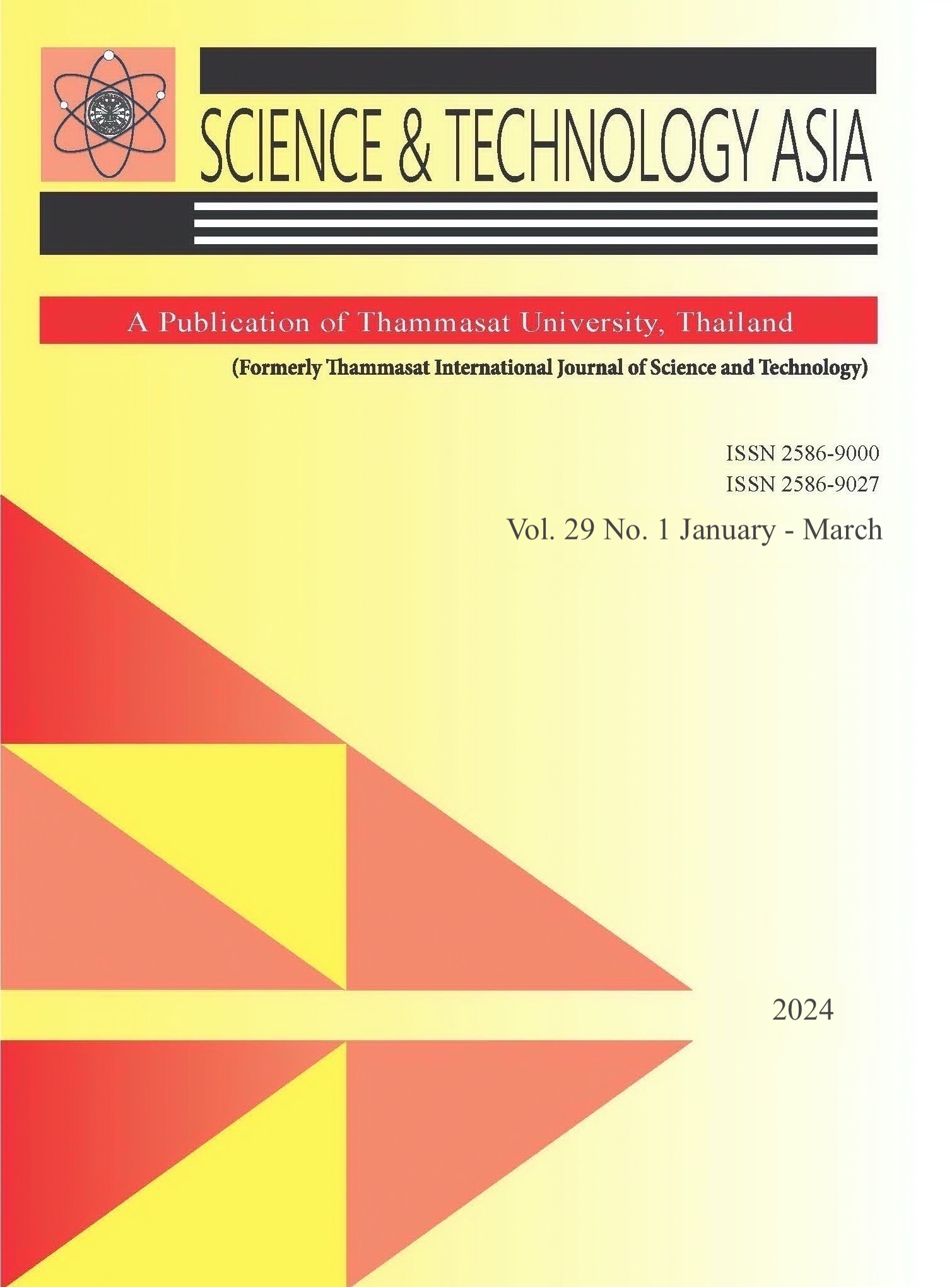Analysis of Freight Modal Shift Potential on Railway Infrastructure Development for Cross-Border Trade under the Belt and Road Initiative Strategy
Main Article Content
Abstract
The Chinese government has developed transport infrastructure rapidly under the Belt and Road Initiative (BRI) strategy. The development of transportation infrastructure has been affected by the transportation aspect of ASEAN countries, especially Thailand. Therefore, this study aims to forecast the freight transportation demand of each mode that will be shifted from the existing transportation mode to the railway mode, specifically in the case of a potential new railway route that can link to the China-Laos railway. A questionnaire was used to collect the data for the 180 samples, which sample group consists of entrepreneurs who are related to freight transportation. Then the Mode Choice Model was generated to forecast freight transportation demand, which is the route that can be connected with the China-Laos railway. The results show that the mode shift of freight transportation is separated into 2 sub-models for the decision-making of entrepreneurs on transportation mode, which consist of (1) entrepreneurs who invest in transportation infrastructure by themselves, and (2) entrepreneurs who do not invest in transportation infrastructure by themselves. The group of entrepreneurs belonging to the (1) sub-model will not change the current transportation mode to rail mode on the railway route due to their investment cost of the infrastructure, which this supposed to be energy products. In the group of entrepreneurs that belongs to (2) sub-model, some entrepreneurs will change the current transportation mode to rail mode on the railway route, which this supposed be to the consumer products.
Article Details

This work is licensed under a Creative Commons Attribution-NonCommercial-NoDerivatives 4.0 International License.
References
Thongtakorn C, Niyomthai S. Analysis of China’s 21st century silk road policy. Thai Journal of Public Administration 2018; 16(1): 95.
Alden C, Sidiropoulos E. Silk, cinnamon and cotton: Emerging Power Strategies for the Indian Ocean and the Implications for Africa. The South African Institute of International Affairs (SAIIA). Available from: https://saiia.org.za/wp-content/up-loads/2015/06/Policy-Insights-18.pdf
AFP.: A direct London-to-China train has completed its first 12,000km trip carrying whisky, baby milk, and machinery. AFP. Available from: https://www.businessinsi-der.com/afp-first-direct-london-china-train-completes-12000-km-run-2017-4
Wu, S.: Singapore-Kunming Rail Link: A "Belt and Road" Case Study. The Diplomat [Internet]. [cited 2021 Jun 25]. Available from: https://thediplomat.com/2016/06-/singapore-kunming-rail-link-a-belt-and-road-case-study/
State Railway of Thailand.: BANGKOK – NONG KHAI PROJECTS (SRT). Asean Railways Portal. Available from: http://aseanrailways.org/?page_id=1125.
Wichitphongsa W, Ponanan K. A Development of Mode Choice Models for Modal Shift Potential Towards Intermodal Transportation: A Case Study of Vientiane-Boten Railway. ABAC Journal. 2021; 42(1): 222-36.
Zgonc B, Tekavčič M, Jakšič M. The impact of distance on mode choice in freight transport. European Transport Research Review. 2019 Dec;11(1):1-8.
Zhang X, Liu C, Peng Y, Lu J. Connectivity-based spatial patterns and factors influencing international container multimodal hubs in China under the Belt and Road initiative. Transport Policy. 2023;143:10-24.
Schramm HJ, Zhang X. Eurasian rail freight in the one belt one road Era. 2018: 769-98
A21 Consultant Co., Ltd., PSK Consultant Co., Ltd., & TransConsultant Co., Ltd.: Travel Demand Freight Movement Survey For National Transport Planning. Office of Transport and Traffic Policy and Planning (OTP). Available from: https://www-.otp.go.th/uploads/tiny_uploads/ProjectOTP/2560/Projcet01/2.2-TDS_Exsum_EN_-Final_20180515.pdf
Office of Transport and Traffic Policy and Planning (OTP).: Freight transportation volume classified by mode of transportation. Transportation GI Portal. Available from: https://datagov.mot.go.th/-dataset/domestic-freight-classified-by-mode-of-transport.
Bhat, C. R. A heteroscedastic extreme value model of intercity travel mode choice. Transportation Research Part B. Methodological 1995;29(6):471-83.
Al-Salih, W. Q., & Esztergár-Kiss, D. Linking mode choice with travel behavior by using logit model based on utility function. Sustainability 2021; 13(8): 4332.
Wulansari, D. N., & Astari, M. D. Mode choice analysis using discrete choice model from transport user (Case study: Jakarta LRT, Indonesia). In MATEC Web of Conferences, EDP Sciences 2018;181:03001.


